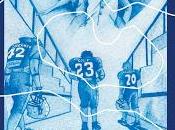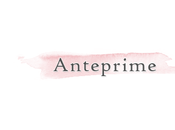
Ackermann Easter Bonnet, 1823
Durante l'epoca Regency il periodo pasquale segnava l'inizio della Season, la stagione dei balli (immancabile quello delle debuttanti ), delle cene, dei ricevimenti, del teatro, dei grandi eventi di beneficenza, dei concerti, la stagione della mondanità; la maggior parte della gentry aveva eletto come residenza ufficiale la propria dimora di campagna, essendo per la maggior parte costituita da proprietari terrieri di antica tradizione la cui ricchezza era ancora proveniente dalla rendita delle grandi proprietà agricole ( la classe borghese al tempo non esisteva, si sarebbe costituita solamente più tardi con la rivoluzione industriale che avrebbe anche modificato quella dei benestanti che diverrà sempre meno costituita da aristocratici e proprietari terrieri, sempre più numerosi saranno gli imprenditori ) e solamente con l'avvento della primavera, che coincideva non a caso con l'avvio delle sessioni parlamentari, lasciava la conduzione di tale residenza ai domestici e dei terreni ai lavoranti per recarsi in quella di città, Londra o Bath: alla campagna avrebbero fatto ritorno solamente sul finire dell'estate quando, nel periodo compreso tra la fine di Luglio ed il 12 di Agosto, il Parlamento si sarebbe chiuso e l'inizio della stagione della caccia, congiuntamente con il caldo afoso che avrebbe reso ostile la permanenza tra i palazzi e le polverose strade di città, avrebbe richiamato tutti verso le antiche residenze di famiglia.

John Pettie, Two Strings to her Bow, 1882
E cosa vi era di meglio, visto che stiamo parlando dell'epoca dell'eleganza e della femminilità, se non sfoggiare un nuovo abito con cui presentarsi a conoscenti e cittadini del ceto meno abbiente che erano rimasti in città, ai negozianti che mai avevano abbandonato la loro attività nelle botteghe ai bordi delle strade, anche se meno frequentate durante l'inverno, ad amici e corteggiatori ritrovati con rinnovato interesse ed entusiasmo ?

The Brave Deserve the Fair by Henry Gillard Glindoni (1852 - 1913)Probabilmente catturare sguardi ammirati indossando un cappellino nuovo all'ultima moda .. proveniente dalle modisterie di Parigi, s'intende !

Millinery in Paris, 1822
La moda del tempo disegnava per l'occasione i cosìdetti Easter Bonnets, i cappellini primaverili creati appositamente per essere inaugurati la mattina della S.Pasqua, l'evento che per eccellenza segna il culmine della primavera: questo nel dipinto sottostante probabilmente è tra i primi dell'epoca Regency visto che risale agli ultimissimi anni del settecento

mentre quelli sotto appartengono al pieno periodo Regency; come potete notare erano per lo più in paglia o comunque in tessuti di cotone, adornati con nastri, guarnizioni floreali e piumate, erano i cappellini che avrebbero accompagnato chi li inaugurava la mattina di Pasqua per tutta la primavera e l'estate successive.

Regency Easter Bonnets, 1811

Regency Spring Walking Dress, 1819

Regency Easter Bonnets, 1812
E' indubbio che la moda del periodo Regency, in ogni suo dettaglio, fosse volta all'esaltazione delle caratteristiche più femminili di ogni Lady ...

Portrait of a Woman in a Cave, c1805

1810, cappello in paglia con nastri in seta, Luise Kleider der Konigen

Andrew Geddes, Portrait of a Lady, c1803 -1810
Sul finire dell'epoca Regency gli Easter Bonnet acquisteranno falde sempre più ampie per assumere la più la forma definita Poke, così definita perchè riuscivano non solo a contenere tutti i capelli di chi li indossava, ma anche a celarne romanticamente l'identità ( il verbo 'to poke' significa sia 'infilare' che 'cercare a tastoni' ); avranno grande fortuna nell'ambito della moda Vittoriana, accolti con entusiasmo anche dalla giovane, graziosissima, regina Victoria, nei primi anni del suo regno, da che troveranno larga diffusione soprattutto a partire dagli anni '30 del 1800 ".. quando la regina Vittoria era ancora molto giovane ed andava di moda per le ragazze indossare cappellini di paglia a forma di secchio per il carbone" scriveva Virginia Woolf ... ma questa è un'altra storia e desidero parlarvene in un'altra occasione.

1815-1820 Poke Bonnet realizzato in stretta treccia di paglia lucida foderato con seta blu con una pannello di carta interposto. Fatto a mano con più strati di paglia intrecciati e sovrapposti. Il Poke Bonnet è rifinito con crine e trecce di paglia e un'ampia fascia di nastro a fiori crema e blu appuntata su tutti i lati e sotto la corona. Ci sono lunghi lacci da legare dello stesso nastro.
Lasciate quindi che infine, in questo modo un po' informale, auguri ad ognuno di voi, miei carissimi amici e lettori, ovunque vi troviate nel mondo, che celebriate la S.Pasqua oppure no, che il sole splenda per voi in questo fine settimana di primavera,

che splenda in voi,che ogni sorriso vi rallegri il cuore,e che l’amicizia, l'amore ed i gesti condivisi,siano fonte di gioia profonda.

Riproduzione di un biglietto augurale dei primi anni del XIX° secolo
A presto ♥



- picture 1 - Ackermann Easter Bonnet, 1823
During the Regency Era the Easter period marked the beginning of The Season, the ball season ( you had not to miss the rookies' one ), of dinners, receptions, theater, major charity events, concerts, in one word the season of worldliness; most of the gentry elected as their official residence their home country, being for the most part made up of landowners of ancient tradition whose wealth was still coming from the income of large agricultural properties ( the middle class at the time didn't exist yet, it would consist only later with the Industrial Revolution that would also modified that of the wealthy people that will become increasingly composed of always fewer aristocrats and landowners, and more and more entrepreneurs ) and only with the advent of Spring, which not by case coincided with the start of Parliamentary sessions, left the conduct of such residence for the household and land to the workers for leaving to that in the cities, London or Bath: to the country they would return only at the end of the Summer when, in the period between the end of July and August 12th, the Parliament would be closed and the start of the hunting season, together with the extreme heat that would have made hostile to remain between the buildings and the dusty streets of the city, will called them to all the former residences of family.
- picture 2 - John Pettie, Two Strings to her Bow, 1882
And there was something better, since we're talking about the era of elegance and femininity, if not to show off a new dress with which appear to acquaintances and citizens who had remained in the city, shopkeepers who had never abandoned their activities in the shops by the roadside, although less popular during the Winter, to friends and admirers gathered with renewed interest and enthusiasm?
- picture 3 - The Brave Deserve the Fair by Henry Gillard Glindoni (1852 - 1913)
Probably to catch admiring glances wearing a new hat at the latest fashion .. coming from the millineries of Paris, of course!
- picture 4 - Millinery in Paris, 1822
The fashion of the time was drawing for the occasion, the so-called Easter Bonnets, hats spring specifically designed to be opened on the Easter morning, the event par excellence that marks the culmination of Spring; in this picture below you can see that was probably one of the first Regency Easter Bonnet that dates back to the last years of the XVIIIth century
- picture 5
while those below belong to the full Regency period; as you can see they were mostly thatched or otherwise in cotton fabrics, adorned with ribbons, trimmings and floral feathered hats were that would accompany those who inaugurated the morning of Easter throughout the Spring and Summer coming.
- picture 6 - Regency Easter Bonnets, 1811
- picture 7 - Regency Spring Walking Dress, 1819
- picture 8 - Regency Easter Bonnets, 1812
And there's no doubt that the fashion of the Regency period, in every detail, was studied for the exaltation of every Lady's femininity ...
- piture 9 - Portrait of a Woman in a Cave, c1805
- picture 10 - 1810, cappello in paglia con nastri in seta, Luise Kleider der Konigen
- picture 11 - Andrew Geddes, Portrait of a Lady, c1803 -1810
At the end of the Regency era the Easter Bonnets will have more and more wide foot to take more definite Poke shape, so called because they only could contain all the hair of the wearer, but also concealed romantically her identity (the verb 'to poke' means both 'insert' that 'groping'); they will have great luck in the Victorian fashion, greeted with enthusiasm by the young, very pretty, Queen Victoria, in the early years of her reign, and will be widely distributed, especially since the 30s of 1800 ".. when Queen Victoria was still very young and it was fashionable for girls to wear straw hats shaped bucket for coal, " Virginia Woolf wrote ... but that's another story and I want to tell you about it another time !
- picture 12 - 1815-1820 Poke Bonnet made of straw braid tight shiny lined with blue silk with a panel of paper interposed. Made by hand with multiple layers of woven straw and stacked. The Poke Bonnet is finished with horsehair and straw braids and a wide cream and blue flowered ribbon pinned on all sides and under the crown. There are long strings to tie with the same ribbon.
So let me finally, in this way a little informal to wish to each of you, my dear friends and readers, wherever you are in the world, whenever you to celebrate Easter or not, that the sun shine for you this weekend of Spring
- picture 13
that it shines in you, that every smile rejoice your heart, and that friendship, love and shared gestures will to you a source of deep joy.
- picture 14 - Reproduction of a greeting card from the early nineteenth century
See you soon ♥


![[Rubrica: Italian Writers Wanted #12]](https://m22.paperblog.com/i/289/2897898/rubrica-italian-writers-wanted-12-L-cIVqIF-175x130.png)






